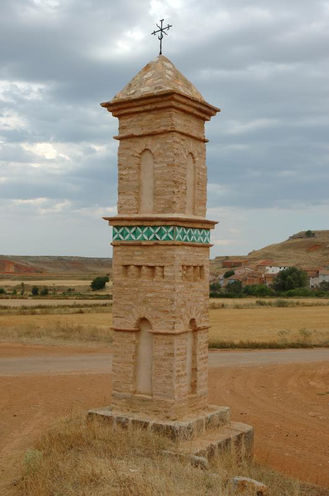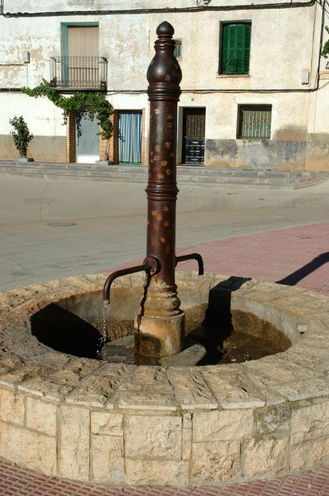
HERITAGE
Hydraulic and Ethnographic

With simplicity, but also with ingenuity, the people of our territory knew how to take advantage of the resources of their environment with architectures as useful and practical as, at times, beautiful.
In the anthropic landscapes of the people seen they were used to thresh the crops, creating curious cobbled accompanied by drawings and haystacks; also small family gardens , with their wells and dry stone "closed". Here or there a bee or a dovecote rose like an isolated tower in the middle of the field. The restored and open loft of Cerveruela stands out.
Also the construction activity fostered since ancient industries such as weaving and limestone.
Likewise, closer to or further from the towns were the snow wells or "fridges" , testimony of the snowy and intense cold seasons in our region.
The hydraulic heritage is varied: Traditional washhouses , many still in use; mills, dams, ancient ditches or canalizations ... from the most humble to the most magnificent examples such as La Parada de Used which retains the waters that go to Zaida, or La Mina de Daroca, a magnificent Renaissance solution to the problems of the floods.
Elements that adorn our towns and landscapes and that tell us about traditions that we must not forget.
The Daroca Mine
Considered the most important hydraulic work in Europe in the Modern Age, between the 15th and 18th centuries, this tunnel continues to fulfill its mission of saving the city from floods.
The continental-type climatology of our territory favors the occurrence of storms, especially in summer, that contribute, in a short time, large amounts of water, sometimes with hail.
Due to the particular orography of Daroca, its main street was drawn following the course of the so-called Rambla Fondonera that collects and conducts all the spluvial water that discharges into the Jiloca River from various catchment areas, joining the contributions of the two mountains between the which the municipality is located.
On the other hand, the fact that it was a walled city caused the floods to produce the consequent floods. Hence, in the 16th century, fearing that the city might disappear devastated by one of those storms, the Council considered the construction of a tunnel that could redirect those torrential waters to the river without passing through the city.
The project was commissioned to a well-known French engineer in Aragon, Quinto Pierres Bedel (or Vedel), beginning in summer in 1555 and ending on September 26, 1560.
This tunnel, with a length of about 700 meters, 6 meters wide and 7 meters high, is a work that, due to its complexity and its economic cost, soon attracted people's attention and "passing the Mine" became a claim.
This was done by kings like Philip II and his entourage in 1585.
And it continues to do so, but beware! There is no threat of a storm!
The Neveras
The use of snow and ice to cool food or for medicinal purposes has been known since ancient times, almost always in the sphere of the upper social classes. It took until the 16th and 17th centuries for it to become popular.
Known as neveras, snowfields, snow wells, etc., these architectures have recently attracted attention as elements of popular heritage deserving of the recognition of Asset of Cultural Interest.
They are circular or polygonal constructions dug into the ground in the manner of a well with a vaulted ceiling whose function was to store well-packed winter snow in layers about 40 or 50 centimeters thick, separated by wide strips of straw. Although they can vary greatly in size, they are usually between 5 and 6 m. in diameter and several more deep.
In the Campo de Daroca region we find them in Atea (near the Hermitage of San Roque), in Daroca (in the pine forest, near the wall), in Mainar (Cabaña de las Viñas), in Nombrevilla (in a private garden), in Badules (next to the cemetery), in Romanos and in Villar de los Navarros.
Special mention should be made of the Used Nevera, converted into an exhibition center on the subject. To visit it, you can contact the local City Council at www.used.com and by calling 976 809 001.









































